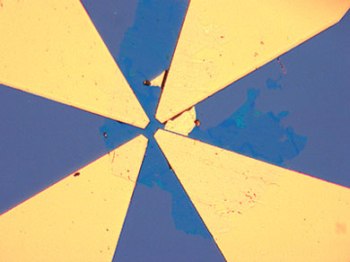Scientists working at the Rensselaer Polytechnic Institute headed by Professor Nikhil Koratkar have devised a new method of harvesting energy from flowing water, with an aim to design self powered microsensors which would be used in cost-efficient and highly accurate oil explorations.
 Researchers at Rensselaer Polytechnic Institute have developed a new method to harvest energy from flowing water.
Researchers at Rensselaer Polytechnic Institute have developed a new method to harvest energy from flowing water.
These researchers have determined how the water flow over surfaces which are coated with nanomaterial graphene would produce a small amount of electricity. They have shown that almost 85 nW of power could be generated from a .03 x .015mm graphene sheet.
According to Koratkar, this much of electricity would be enough to power miniature sensors which are introduced into the water or any other fluid and pumped into a potential oil well. This injected water would pass by natural crevices and cracks in the earth, and the sensors would be able to detect if hydrocarbons were present, or even if there were hidden places having natural gas and oil. As long as the water flows over the graphene sheets, a reliable source of power would be available for the sensors to relay the gathered information and data to the surface.
Conventional batteries cannot be used, as the sensors were too tiny and hence they had created a graphene coating which would permit the capture of energy from the movement of water over the sensors. Koratkar, who is a Professor both at the Rensselaer School of Engineering’s Department of Materials Science and Engineering and at the Department of Mechanical, Aerospace, and Nuclear Engineering states that this was the first time such a study was conducted with graphene, even though in the past a similar effect had been seen for carbon nanotubes. The study, “Harvesting Energy from Water Flow over Graphene,” has been published online in the journal Nano Letters, and would also be printed by the journal. This is the first research paper resulting from a $1million grant given by the Advanced Energy Consortium in March 2010 to Koratkar’s group.
According to Koratkar, the Oil and Gas companies would prefer to boost this process by sending down huge numbers of nanoscale or microscale sensors into both existing and new drill wells. They would then travel into the earth, laterally forced by the pressurized water, which is pumped into these wells into the cracks and crevices in the earth’s surface. Hence these companies can carry out both vertical and lateral explorations which would give them more data for determining the best drilling locations.